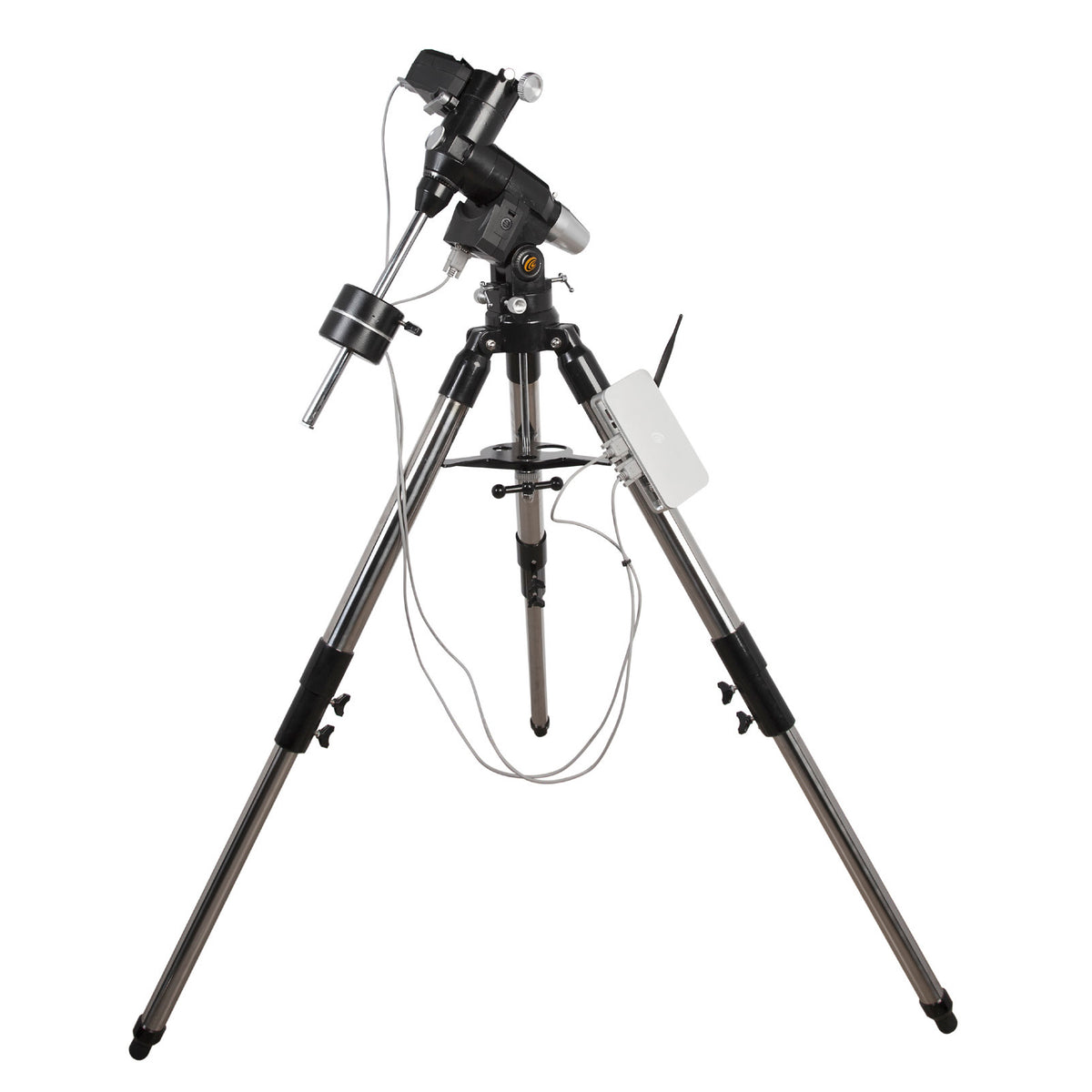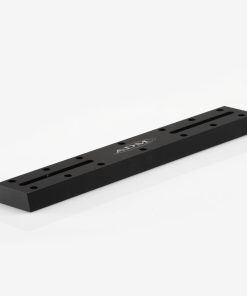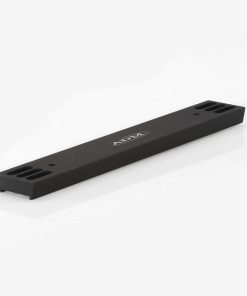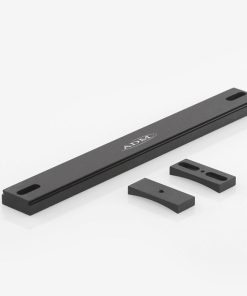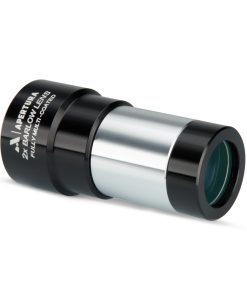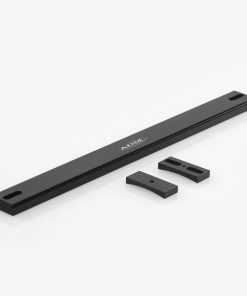Explore Scientific EXOS-2GT Computerized Mount with PMC-8 GoTo Electronics – Black – ES-EXOS2GTPMCT3-00 Explore Scientific
$ 999,99 $ 250,00
Explore Scientific EXOS2-GT Equatorial Mount with PMC-8 OpenGOTO Electronics
This EXOS-2GT German Equatorial mount by Explore Scientific is computerized with the latest PMC-8 OpenGOTO Electronics. This computerized mount is easily controlled using your smartphone, tablet, or Windows, PC through the free ExploreStars application via its full graphical user interface. The EXOS-2GT mount features a belt-driven system with two timing pulleys. The fiberglass-reinforced neoprene belt attaches directly to the Nema11 .67 amp stepper motor and then connected to the worm. The PMC-8 EXOS2-GT offers nine tracking speeds, and precision ball bearings in RA and Dec help to minimize backlash. This Explore EXOS2GTPMCT3-00 is black and has a weight capacity of 28 pounds. It sports a Vixen-style saddle that will accept a wide range of refractors, short Newtonians, or Schmidt-Cassegrain telescopes.
The adjustable tripod that supports the EXOS2-GT is made of stainless steel and has large 2″ diameter legs for excellent support. A cast aluminum spreader bar helps stabilize the mount and has a place to store a few eyepieces. A bubble level is built into the system, allowing you to more easily set up and align your scope. Also included are a 22-pound counterweight and a 12V battery pack that accepts eight (8) user-supplied D batteries. Additional counterweights are available separately should you need them.
Explore PMC-8 Open GoTo Electronics Features
- Guide the PMC-Eight with the free ExploreStars app, which can easily locate 70,000 objects, or use your own ASCOM-compliant sky software
- Operates with Windows® PC, Tablet, or Smartphone – not included
- 2-Channel Multi-Processor Micro-controller
- Eight CPU’s run independently and have deterministic behavior
- Stores parameters in 64-kb EEPROM non-volatile memory bank
- Wireless Ethernet 10/100 with full IP function
- ST4 Autoguide port
- Open Source software lets you add customized lists and features or download custom features other PMC-8 owners have created
The Explore Scientific PMC-8 electronics offer amazing flexibility, with a 2-channel multi-processor, 8 independent CPU’s, and the only wireless ASCOM driver on the market today. ExploreStars OpenGoto Software, an Explore Scientific open source app available for free from the Microsoft App store, allows users to operate the PMC-8 electronics wirelessly using a Windows tablet or smartphone. If you prefer to forego using a smartphone or tablet, the PMC-8/ExploreStars driven telescope can also be operated wirelessly or wired using other popular astronomy software programs from your computer via ASCOM.
Once you have downloaded the Explore Stars app, you will have access to a large database of over 70,000 stars as well as the entire Messier Catalog and Solar System objects. Additional catalog downloads are available on the Explore website, including the NGC and IC catalog, and special guided tours can also be reached from the ExploreStars pull-down menu. Other features available from the menu include 2-star and 3-star alignment procedures, the sync button, the park position, a search feature, and an input screen to enter RA and DEC coordinate information. A numerical keypad allows for selectable and user enterable GOTO speeds for slewing, centering and guiding rates. You can also set sidereal, king, lunar, solar, and user-defined tracking rates.
What really makes Explore Scientific’s PMC-8 unique is its open architecture. Download Explore’s SDK and program the PMC-Eight with your own code to create a customized list of objects or commands and then share it with other members of the OpenGOTO Software Community. If you don’t code, you can still download custom lists and features from other PMC-8 owners who do!
The PMC-Eight-enabled EXOS-2GT Equatorial Mount, with its built-in wireless ASCOM driver, can be controlled by any ASCOM compliant software including Maxim DL, The Sky, Starry Night, SkyTools 3, AstroArt, Cartes du Ciel, DeepSky, MaxPoint, Stellarium, Star Atlas Pro, and many more. GPS compatibility and auto time/date setting are dependent on the receiver you have on your computer, tablet, or phone.
Quick Shipping and Professional Packaging
Due to our longstanding partnership with UPS FedEx DHL as well as other major international carriers, we are able to provide various shipping options. Our warehouse personnel are well trained and will be able to pack your goods in accordance with the exact and precise specifications. Your goods are thoroughly checked and securely secured prior to shipment. Everyday we deliver hundreds of packages to our customers from all over the world. Our determination to be the biggest online retailer in the world is shown by this. The warehouses are located situated in Europe in the same way as they are in the USA.
Note: Orders containing multiple items will have a separate processing period for each item.
We will carefully examine all products before they are shipped. Today, the majority of orders will be delivered within 48 hours. The delivery time will be between 3-7 working days.
Returns
We don't manage the stock at our warehouse and factory. The actual inventory may fluctuate at any time. It's possible that you may not receive your order once it's been placed.
Our policy is for 30 days. We are unable to return or exchange your purchase after 30 days since the purchase.
In order for your item to be eligible for return the item must not be opened and in the condition you received it. It must also remain in the original packaging.
Related products
Telescope Accessories
ADM Accessories Vixen Style Dovetail for Celestron C8 – VC8 ADM
Telescope Accessories
ADM Accessories Vixen Style Dovetail for Meade 10″ SCT – VM10 ADM
Telescope Accessories
ADM Accessories CGEM Knob Upgrade – Altitude Locking Knob – CGEM-T-OR ADM
Telescope Accessories
Apertura 0.75X 2″ Focal Reducer For RC Telescopes – A-RCR Apertura
Telescope Accessories
ADM Accessories Vixen Style Universal Dovetail Telescope Mounting Bar – 11″ Long – VDUP11 ADM
Telescope Accessories
Apertura 1.25″ Chrome Barrel for 1.25″ Eyepieces, Barlows & Diagonals – 125B Apertura
Telescope Accessories
ADM V Series Dovetail Bar for Celestron 8″ SCT – Orange Anodized – VC8-O ADM
Telescope Accessories
ADM Accessories CGEM Knob Upgrade – Orange Tripod Knob Set – CGEM-TKS-OR ADM
Telescope Accessories
ADM Replacement Azimuth Knobs for Celestron Advanced VX Mount – VX-AZ ADM
Telescope Accessories
ADM Accessories D Series Dovetail Plate for Celestron 9.25″ SCT OTA – DC925 ADM
Telescope Accessories
ADM Accessories Tripod Knob Set for Losmandy G11 & Celestron CI700 Mounts – Red – TKS-RE ADM
Telescope Accessories
ADM V Series Universal Dovetail with 125 mm Rings – VDUPR-125 ADM
Telescope Accessories
ADM V Series Dovetail Bar for Newer Celestron 6″ SCT – VC6 ADM
Telescope Accessories
ADM Accessories Tripod Knob Set for Losmandy G11 & Celestron CI700 Mounts – Orange – TKS-OR ADM
Telescope Accessories
ADM Accessories Vixen Style Dovetail for Celestron 11″ SCT – VC11 ADM
Telescope Accessories
ADM V Series Dovetail Plate for Celestron 9.25″ SCT – Orange – VC925-O ADM
Telescope Accessories
ADM Accessories CGEM Knob Upgrade – Polar Hole Plug – CGEM-PL-OR ADM
Telescope Accessories
ADM Accessories CGEM Knob Upgrade – Altitude Adjusting Knob – CGEM-ALT-OR ADM
Telescope Accessories
ADM V Series Universal Dovetail with 100 mm Rings – VDUPR-100 ADM
Telescope Accessories
ADM Accessories Vixen Style Universal Dovetail Telescope Mounting Bar – 7″ Long – VDUP7 ADM
Telescope Accessories
ADM Accessories CGEM Knob Upgrade – Two Orange Anodized Spreader Bar Knobs – CGEM-SB-OR ADM
Telescope Accessories
ADM Accessories CGEM Knob Upgrade – 2 Azimuth Knobs – CGEM-AZ-OR ADM
Telescope Accessories
ADM V Series Universal Dovetail with 150 mm Rings – VDUPR-150 ADM
Telescope Accessories
ADM Accessories Tripod Knob Set for Losmandy G11 & Celestron CI700 Mounts – Black – TKS-BK ADM
Telescope Accessories
ADM Accessories CGEM Counterweight Bar 22 Inches – CGEM-CW ADM
Telescope Accessories
Telescope Accessories
ADM Accessories Celestron CGX Side-By-Side Adapter – CGX-SBS ADM
Telescope Accessories
Telescope Accessories
ADM Mini Dovetail Bar for Celestron 9.25″ SCT – MDS-C925 ADM
Telescope Accessories
ADM Accessories CGEM Knob Upgrade – Two Orange Anodized Rosette Saddle Knobs – CGEM-SAD-OR ADM
Telescope Accessories
ADM Tripod Knob Set for Celestron CGEM DX Mount – CGEM-DX-TKS ADM
Telescope Accessories
ADM Accessories Rosette Tripod Knobs for Celestron Advanced VX Mount – VX-TKS ADM
